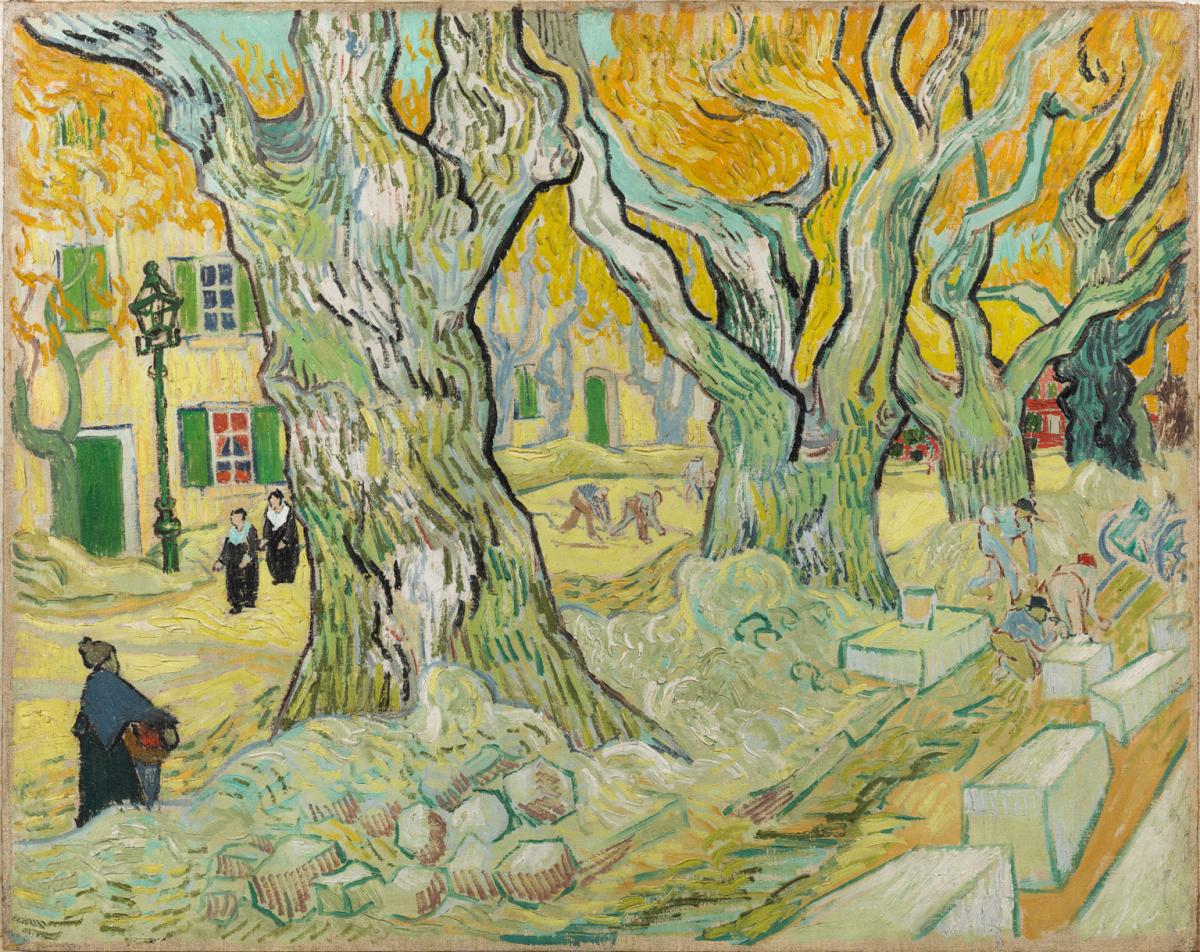Van Gogh Repetitions
Exhibition

Van Gogh Repetitions takes a fresh look at the artistic process of Vincent van Gogh (1853–1890). While recognized for the intensity and speed with which he painted, the artist could also work with careful deliberation, creating numerous versions of some of his most famous subjects. The first exhibition in Phillips Collection history devoted to the artist, Van Gogh Repetitions goes beneath the surface of some of his best-known paintings to examine how and why he repeated certain compositions during his 10-year career, inviting viewers to look more closely than ever before at van Gogh’s celebrated works.
Featuring 35 paintings and works on paper and examples of 13 repetitions, the exhibition is the first to focus on van Gogh’s “repetitions”—a term the artist used to describe his practice of creating more than one version of a particular subject. He often began by sketching a person or landscape rapidly from life. Back in the studio, he would repeat the subject, reworking and refining his idea on a fresh canvas, in some cases many times, to extract the essence of a motif.
Van Gogh Repetitions is inspired by The Road Menders (1889) in The Phillips Collection and a painting of the same subject, The Large Plane Trees (1889), in The Cleveland Museum of Art. The exhibition reunites the two masterpieces—never before seen together in Washington—and invites deep, focused study of the similarities and differences between them, revealing some surprising facts about van Gogh’s process and motivation. Changes among repetitions are also explored in van Gogh’s series of portraits of his friend Joseph Roulin and Roulin’s family. The exhibition also highlights the artist’s practice of repeating work by other artists, including Paul Gauguin. Created in significant locales in the Netherlands and in France, including Paris, Arles, Saint-Rémy, and Auvers, the works in the exhibition reveal the vitality and persistence of this method across van Gogh’s career.
The exhibition brings together portraits and landscapes from some of the world’s most renowned collections, including The Museum of Modern Art, New York; Museum of Fine Arts, Boston; Philadelphia Museum of Art; The Art Institute of Chicago; Kröller-Müller Museum, Otterlo; and the Van Gogh Museum, Amsterdam. Masterpieces from the Musée d’Orsay, Paris, including The Bedroom at Arles (1889), are also showcased alongside paintings from the Phillips’s permanent collection by artists van Gogh admired, including Gauguin, Honoré Daumier, and Rembrandt van Rijn, to create a richer, more meaningful picture of his personal life and artistic production.
The exhibition is organized by The Phillips Collection and The Cleveland Museum of Art.
Curator and Conservator’s Notes
Chief Curator Eliza Rathbone and Head Conservator Elizabeth Steele discuss their research into van Gogh’s process.
ER: In 2005 the Phillips’s Road Menders was studied beside The Large Plane Trees at The Cleveland Museum of Art. Their conservators and curators undertook detailed technical examinations on the two works to better understand van Gogh’s process of creating repetitions.
ES: The surfaces of the paintings were studied using a stereo binocular microscope. X-radiographs were made of each work to detect differences in the application of paint. Infrared images were analyzed for signs of tracing or other duplication methods. This in-depth study, paired with direct comparison of the two works side by side, made a convincing case as to which painting was created on site and which was the repetition. The brushwork in The Large Plane Trees is fluid; there are signs that van Gogh reworked certain passages and that he added the figures and other details, such as the lamppost, on top of a completed landscape. The brushwork in The Road Menders is more controlled; the layout of the composition appears pre-planned, with places left in reserve on the canvas for most of the elements. The spontaneity found in the Cleveland painting pointed to it being the first rendition, while the more controlled execution in the Phillips’s street scene designates it as the repetition.
ER: These fascinating results led me to propose an exhibition that would bring these two works—and other van Gogh repetitions—together. Over the course of five years, our team of curators and conservators traveled widely—to museums in the Netherlands, Paris, Rome, New York, Boston, Chicago, Detroit, and Philadelphia, and collections from California to Switzerland—studying works that are in the exhibition, as well as related works that could not travel.
ES: We meticulously examined over 50 paintings in 23 museums, in total studying 18 instances of repetitions. We reviewed the records and studied the x-radiographs and infrared images for each picture, spending countless hours peering through microscopes, searching for signs that would elucidate the artist’s process.
ER: Because each work has its own individual history, this was the only way to glean the kind of precise facts we needed to draw upon for our research. It was thrilling to see van Gogh’s brushstrokes magnified, and to see the edges of his paintings that had been hidden behind the frames, revealing the original brilliant colors.
Exhibition Support
Proudly sponsored by

Additional support provided by the Robert Lehman Foundation
and TTR Sotheby’s International Realty
Brought to you by the Van Gogh Repetitions Committee: John and Gina Despres, Louisa Duemling, Dr. Gerald and Kay Fischer, Nancy M. Folger, B. Thomas Mansbach, Barbara and Arthur Rothkopf, Melissa J. Thompson, and George and Trish Vradenburg
The exhibition is supported by an indemnity from the Federal Council on the Arts and the Humanities.
The exhibition features exceptional loans from the Musée d’Orsay.













